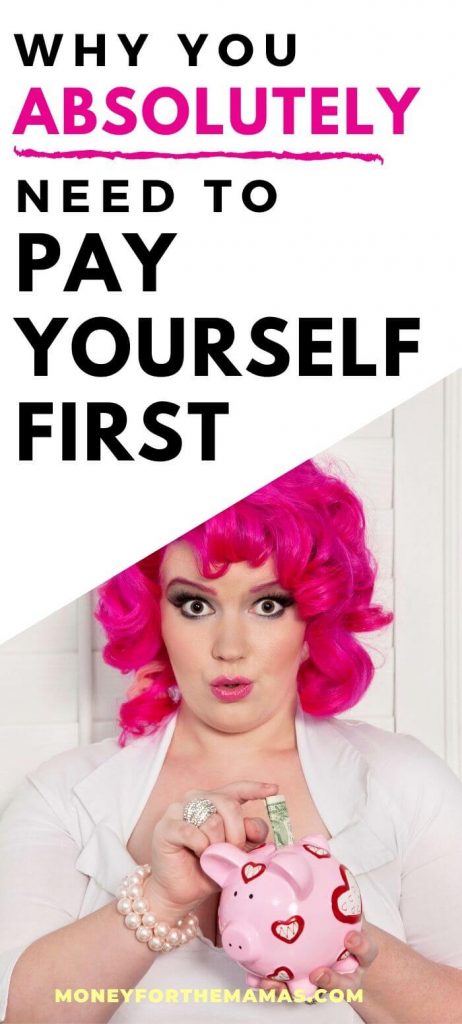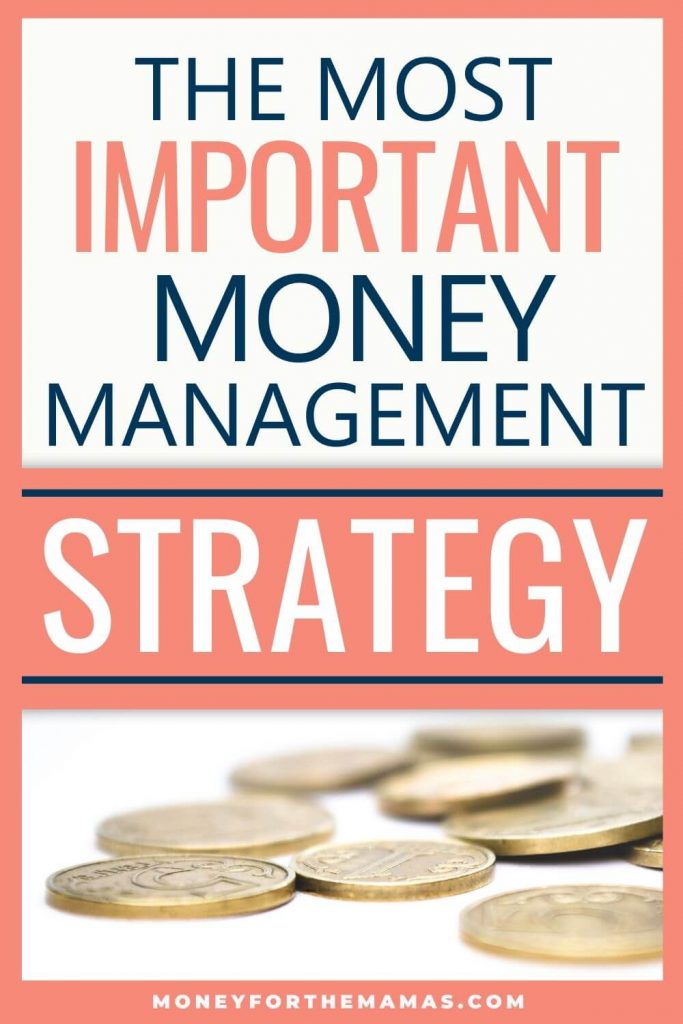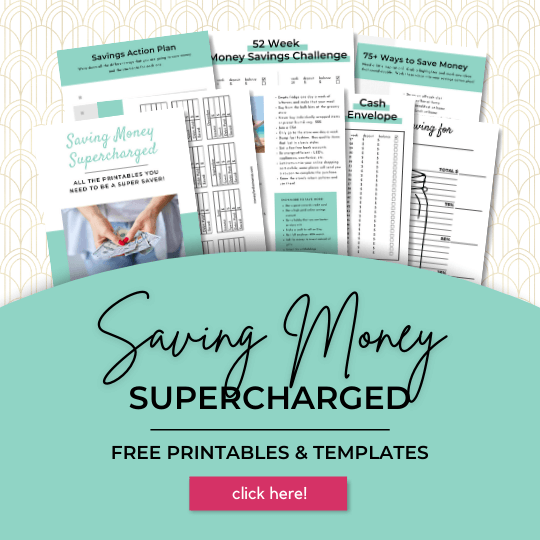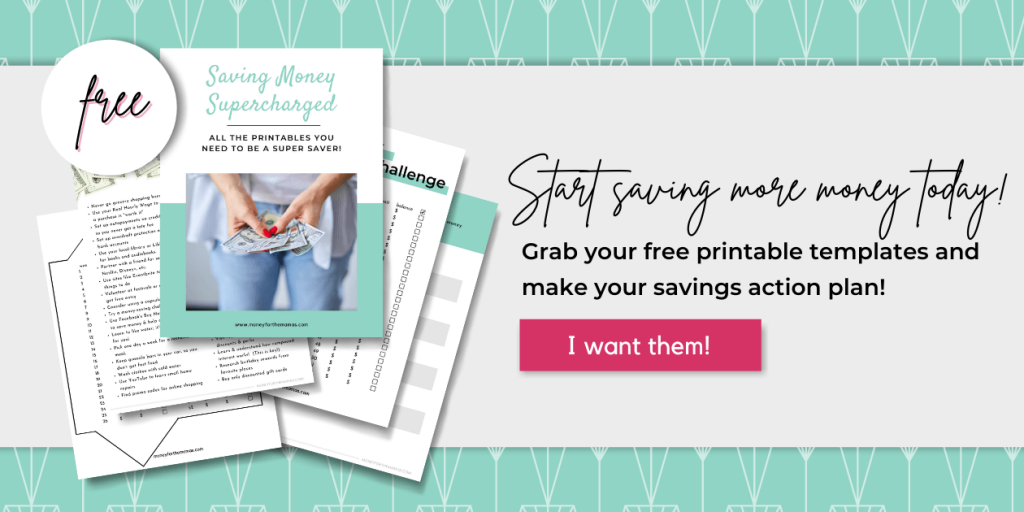Pay Yourself First (The Smartest Savings Strategy Ever!)
Paying yourself first is the most important strategy to help you build wealth

Author: Kari Lorz – Certified Financial Education Instructor
It seems that the number one complaint with families who are trying to get ahead financially is that there is never enough money at the end of the month to save. Hands down! That’s the complaint.
Yet, little did they know that they were already doomed by payday. With one small tweak, they could have nailed it and saved hundreds that month.
It’s a straightforward concept that many choose to dismiss or just overlook. It’s to pay yourself first! Let’s dive in and see how YOU can save hundreds next month!

This post may contain affiliate links. If you make a purchase, I may make a commission at no cost to you. Please read my full disclosure for more info
How everyone “saves” money (the wrong way)
American saving patterns follow a typical path; you go about your month by paying bills first and then use what’s left over to “save.” But we all know what happens in this scenario. (I know this because I used to budget this way too, and no, it never worked for me).
You pay your bills, and you intend to save the rest, but what happens is that you almost always find something that you “need” to buy. And why not? You checked your bank balance, and you still have cash in there! And swipe, there it goes. Two days later, you remember that the money was for “saving.” ARG!
With paying yourself first, there is no ARG moment because you took care of your family first!
Could you imagine if the IRS waited until the end of the month to collect from people? Taking their portion first was probably one of the smartest things the government has ever done! (belly chuckle)
Can the pay-yourself-first budgeting principle really work? YES! You need to do this for yourself! You need to stop putting other people’s priorities before you & your family’s goals, and I’m going to show you how!

How does paying yourself first work?
- Step One: Decide on the amount of your savings goal
- Step Two: Determine where you want your savings contribution to go
- Step Three: Make it an automatic transfer
- Step Four: Repeat as needed
For my family’s Better Budget, we pay ourselves first four times before we even pay any monthly expenses (aka bills)! Sounds odd but let me explain.
My husband and I both have an employer-sponsored retirement plan – 401k, I have a Traditional and a Roth IRA, and we have multiple sinking funds. All of these accounts are for “saving.” Then we have our sinking funds, and then we pay bills.
Let’s drill down into the steps below.
Step One: decide how much to save
A good rule of thumb is to start at looking to save 7-10% of your gross income. So saving money from your paycheck before it goes into your checking account. You can, and should, increase it later on to 15%, maybe even 20%. Ideally, 15% goes straight into retirement accounts, and the other “savings” go to sinking funds for planned purchases.
- short term sinking funds – the money goes into cash envelopes
- long-term sinking funds – are for revolving savings, like vacations, or for a bigger financial goal, like a down payment on a new home. These are separate accounts, typically under the main umbrella account.
Step Two: decide where you want the money to go
Figure out where you want this money to go. Investments? Emergency Fund? Setting your budgeting method up with a matching banking system is essential for success! After that let’s start with an option that will give you FREE MONEY. Because let’s face it, money doesn’t usually grow on trees, but in this case, it does! It’s called a 401(k) money tree (no, not really).
Saving money in workplace retirement programs:
Many businesses offer a workplace match program, and this is the free money part. Where, when you put in a certain %, then they match you a certain %. These can vary wildly from no match, up to 15% depending on the industry and company. Some even split it, as with my regular day job, they put in $.50 for every $1 that I put in up to 5%. So in very basic and rough math a 2.5% match, not great. BUT, free money is free money, I’ll take it!
If you work for the government, schools, or nonprofits, you will have a similar program but with a different title. I.e., a 403(b), a 457 plan, pension, etc.). These are considered tax advantaged investments, as you invest pretax.
This money is taken out of your paycheck for you (the ultimate in paying yourself first methodology); you don’t need to transfer anything, see your HR Dept for paperwork. However, you will need to decide a few key things; if you want pre-tax (traditional) or post-tax (Roth) paycheck deductions. This is a deep rabbit hole, which I won’t go into right now, as we don’t have 548 hours to debate the merits and drawbacks of each.
If you are just starting out with saving money, then contribute just enough to get the employer match, and then let’s shift to the next most essential savings bucket, your emergency fund.
Saving money with sinking funds
People commonly make the mistake of only saving money for “emergencies” (see more on that category below). But you can be saving for all sorts of things at the same time, they’re called sinking funds. Yes, you are saving money with the specific intention of spending it (so the amounts shouldn’t be considered part of your retirement savings).
Sinking funds are for after you have your emergency fund taken care of. These are basically pre-saving for expenses, like your car’s oil change or new tires. You can get started with some sinking fund printables right now, and never worry about those one-off expenses ruining your monthly budget ever again! You can find the full list of sinking fund categories right here!
Saving money in an emergency fund:
If you have zero in savings, then let’s get you going! Your emergency savings is a cornerstone in having a secure financial framework. Without it, if something terrible happens, like a recession, you will end up with mounds of credit card debt that could spiral downward in no time flat. You may even be already in that spot. Breathe deeply; it’s okay, you’ve got this! Let’s get to planning!
You should have an emergency fund of at least six months of living expenses set aside for real emergencies (i.e., lost a job, lost your house or your car, hospitalization, etc.). Some people feel more comfortable with a nine-month cushion, and that’s fine too, I just wouldn’t go lower than six months cushion.
Once you fill your emergency savings, then you can go after the other top 10 things you should be saving for!
There are some great resources that delve into paying yourself first a lot more than the scope of this post. You can read more about this budgeting model in David Bach’s book The Automatic Millionaire, where he covers this and other critical financial lessons.
Although I do disagree with his thought process that you don’t really need to budget, I find that the other 97% of his teachings are gospel! All of his books are a great read, but this is a perfect starting book for newbies to Bach’s framework on personal finance.
Step Three: make it automatic
Set up an automatic transfer for three days after payday. (sometimes weekends or holidays cause deposits to be in “pending” status, so you don’t want to overdraw. Three days is safe for everything to clear into your account before you take it out.
Automating your savings is crucial to making them happen. Trust me; life will get in the way, you will forget, or find another use for spending the money. Please trust me on this, it will be so much easier for you to automate it, and it will be 100% consistent.
For our setup, we get paid (workplace contributions are automatically taken out of our paychecks), and then three days later we have auto transfers set up into my IRA and our daughter’s ABLE account, and all of our sinking funds. I never have to do anything!
Paying yourself first is a money management strategy, yet if you’re looking for more nuts & bolts type of tips be sure to check out my post on the Top 10 Budgeting Tips That You Don’t Want to Miss!
Do not save what is left after spending, but spend what is left after saving
Warren Buffett
Where to put your emergency fund
You can’t pay yourself first into your same bank account, it gets too confusing, so you should look into having more than just the standard one checking and one savings account. You need your money in a separate account, so there is never any confusion about what funds are slated for what purpose. No debate! It must be separate! (We have 5 separate accounts).
My bank allows us to have multiple accounts without fees. Please check with your bank on any qualifiers that you need to meet to have multiple free checking accounts.
If you have the habit of all too easily transferring money back and forth into accounts, consider opening an account at a separate establishment. That way, you don’t see it on your regular banking interface. For example; my family’s Emergency Fund is in a high yield savings account at Ally Bank, I never actually see this money on banking screens, it’s entirely separate.
One of the great things about having an Ally bank savings account for our emergency fund is that it earns a MUCH HIGHER interest there than it would at our regular bank. Every day banks typically offer horrible interest rates on savings accounts, like .08% APY, while some even go as low as .01%. While Ally is now offering .50% (as of April 2021, yet this could vary slightly at any time).
For example – if you had a $30,000 emergency fund. In one year at a regular bank with a savings account of .08% APY you’d earn $24. While at Ally, with .50% you’d earn $150. Then that money starts earning compound interest too, so you’ll automatically pay yourself first again, and again!
Ally bank is so consistent with its rates, service, and features that Money Magazine rated them the Best Online Bank of 2020. Oh, and $0 service fees on both checking and savings accounts.
So there’s my emergency fund, growing wealth so to say, and I’ve basically forgotten about it (the ultimate passive income stream). This is definitely a good feeling!
If you need some help making saving money more “fun” try a 52 week saving challenge! You can save $1,000, or $5,000, or even $10,000 by the end of a year!
A common banking mistake and how to sidestep it
You must also change the name of your account to “EMERGENCY”, yes all caps, because the psychology around this is legit! Giving a specific name to your funds makes it A LOT harder to “borrow” money from it for a non-emergency related purchase. Trust me.
You don’t want to make these budgeting mistakes either! Who knew money could be so sneaky!
You can now look at your bank account balance (after your payday and monthly automatic transfers) and know that what is in there is money that you can spend on whatever you need. You don’t have to worry that you won’t have anything left to save.
I know your account balance will look lower than it usually does, but don’t freak out. This is all part of the new plan, and as I said before, anything new takes a bit of getting used to.
Let’s recap where we’re at…
- contribute just enough in your workplace retirement plan to get the full match.
- add to your emergency fund, having no less than six months of living expenses.
BUT WAIT, what about debt repayment? Where does that fit into the plan? Undeniably the King of Getting Out of Debt is Dave Ramsey. His methods have worked for thousands, maybe even hundreds of thousands of people. He has many solid teachings. Yet, I don’t 100% agree with all of his advice.
For now, let’s look at his first four Baby Steps to be taken in this exact order…
- Save $1,000 emergency fund
- Throw ALL your money at debt repayment and be 100% debt free besides your mortgage
- Go back and finish the emergency fund with 3-6 months expenses
- Invest 15% into retirement buckets
You can see we part ways at step one, whoops! I’d never turn down free money, and neither should you! Remember, you should take everything with a grain of salt, some moderation, and some flexibility. I am fine with agreeing to disagree with him on this ?
If you are interested in learning more about his teachings (they were the first personal finance books that I read) then check them out. If you need some convincing on his program and like case studies, then check out The Total Money Makeover: A Proven Plan for Financial Fitness. Or if you want to cut the fluff and get straight to the actionable steps, then Dave Ramsey’s Complete Guide to Money is for you. Happy reading!
Step Four: repeat as needed
If you still have funds available then go back and look at contributing more to your workplace plan (if they have good options) or look at opening an IRA account. Which is very similar to the 401(k) plan but it’s your own. It’s an Individual Retirement Arrangement. This can be a better option because you can choose your investment firm and how you want to invest your money. I.e., pre-tax, Roth, ETF’s mutual funds, bonds, INDEX funds, etc. This is again a HUGE rabbit hole that we won’t go down today. If you still have some funds left to save then maybe look into sinking funds. For now, just in the habit of paying yourself first.
Ready to implement the pay yourself first model with your business? Check out Profit First: Transform Your Business from a Cash-Eating Monster to a Money-Making Machine, which the author Mike Michalowicz lays out an amazing step-by-step framework for regular business owners to always make sure that they too always get paid!
Is a pay-yourself-first strategy even needed?
According to Investopedia “Research on savings indicates that a relatively small percentage of Americans follow the “pay yourself first” adage.
As of 2016, fewer than a quarter of Americans had enough savings to cover six months’ worth of expenses, and as of 2017, an estimated 39% of Americans had no savings at all, and 57% had less than $1,000 in an emergency fund. In 2018, 23% of Americans had nothing saved for an emergency.” (source)
So the answer is YES! In fact, it’s such a big yes that it made the list of the must-do smart money rules that you need to follow!
At the end of the day
This method has enabled my family to build a full nine-month emergency fund, and have four separate sinking funds (house, car, vacation, kiddo). We’ve been able to plan ahead, so any purchases in those categories are essentially already paid for.
It’s so nice to be able not to worry when your car goes into the mechanic shop, as you know you have it covered! Plus, we’re working on our long-term goals like funding our retirement.
Paying Yourself First can seem like a drastic change to saving money, but think about it, the currently “normal” way of saving money hasn’t really worked (see paragraph two on the sad state of American savings). So it’s time for something new, something different because you will never reach your dreams if you don’t prioritize them!
It’s time to put you and your family’s future and goals first!
Let me know in the comments below, what percent of your pay are you saving? Remember, it’s totally okay to start small so long as you just START NOW!
Related articles to paying yourself first:
- How to Budget with a Better Budget
- How to Bank for Budgeting Success
- Sinking Funds are Key for Actually Saving Money
- The Budgeting Mistakes That You Don’t Want to Make
- Free Budgeting Templates
- How to Prepare for a Recession
- Emergency Fund FAQ – Everything That You Need to Know!









Wow! I didn’t know there was a name for it! I always called it ‘keep feeling broke.’ Because when I cleaned out my checking leaving only a set amount of $ in there, everything had to run the checklist of need before I bought it. Mind you, 20 years ago $50 went a lot further, but if I knew that’s all I had to spend, I couldn’t justify spending much. And I got ahead. Great post, mama. I feel you.
Yes, looking at your checking right after payday can be hard, as most of the money (the portion your saving) is already gone. You choke for a second and then remember “oh ya, I put it in savings”, cue smile 🙂